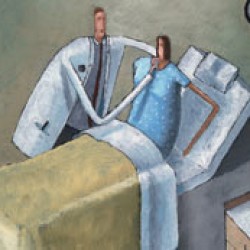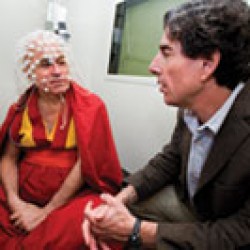Planting the Seeds of a Healthy World
The UW’s Global Health Institute offers seed grants for studies.
To mark the launch of the UW’s new Global Health Institute in October, that organization gave out seed grants to boost the work of campus research groups that are conducting multidisciplinary studies aimed at tackling health problems worldwide.
The institute combines two previous campus entities, the Center for Global Health and the Global Health Initiative. Its purpose is to foster research that requires collaboration among UW departments, schools, and colleges.
“Our goal is to engage the full campus in a dialogue about how to improve global health,” says director Jonathan Patz. “We see ourselves as a sort of incubator — the seed grants promote cross-school collaboration, because the greatest discoveries [in the health fields] come at the intersection of different disciplines.”
The seed grants provide $40,000 over two years to eight research teams looking into health issues in regions around the globe. Recipients include:
- Leonelo Bautista, studying hypertension in Latin America
- Chuck Czuprynski PhD’80, seeking methods to control the spread of brucellosis among cattle in Ecuador
- Jeremy Foltz MA’94, PhD’98, studying whether an increase in corn yields can alleviate poverty in northern Africa
- Lewis Gilbert, hoping to detect the spread of new diseases by monitoring wildlife populations
- Monica Grant, studying whether mobile phones might help disseminate health information in Malawi and Uganda
- Gary Green, studying organic mango production in Haiti
- Nancy Kendall and Claire Wendland, exploring reproductive health among young women in rural Malawi
- Alberto Palloni, examining child nutrition in Indonesia
“Each of these projects offers something new and different, not just the traditional mandate of global health,” Patz says. “They look beyond health to think about economics and veterinary medicine and environmental science and sociology and urban planning. They get at the root causes of health problems.”
Published in the Spring 2012 issue



Comments
No comments posted yet.